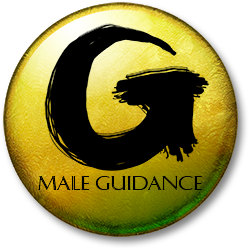
Too Much of a Good Thing: Understanding Hemochromatosis

Imagine your body needs iron to stay healthy. Iron helps your blood carry oxygen and keeps you energized. But what if your body starts collecting too much iron, like a hoarder who can’t stop gathering stuff? That’s kind of what happens with a condition called hemochromatosis. It’s a genetic disorder, which means you inherit it from your parents. If you have hemochromatosis, your body absorbs too much iron from the food you eat and then stores it in your organs.
Iron: Why Your Body Needs It (and How It Works Normally)
Before we talk about too much iron, let’s quickly review why your body needs iron in the first place.
Your red blood cells contain something called hemoglobin. Hemoglobin is like a tiny delivery truck that picks up oxygen in your lungs and carries it to every single part of your body – your brain, your muscles, your organs. Iron is a super important part of hemoglobin. Without enough iron, your body cannot make enough healthy red blood cells, and you might feel tired and weak. This is a condition called anemia, which is when you have too little iron.
Normally, your body is really smart about iron. It absorbs just the right amount from your food and lets the rest pass through. A special protein, mostly made in your liver, controls how much iron your body absorbs and moves around. This careful control keeps iron levels balanced.
What Happens in Hemochromatosis?
In people with hemochromatosis, this careful control goes wrong. Their bodies act like they are always short on iron, even when they have plenty. They absorb much more iron from food than they need.
Your body does not have a good way to get rid of extra iron. So, where does all this extra iron go? It starts building up in different organs throughout your body. Think of it like rust forming on metal – it damages the parts it lands on. Over time, this iron overload can damage your liver, heart, pancreas, joints, and other glands.
Who Gets Hemochromatosis?
Hemochromatosis is usually a genetic condition. This means you inherit a faulty gene from your parents. Most cases link to a specific gene called HFE.
- Inheriting the Genes: To develop the most common type of hemochromatosis, you typically need to inherit two copies of the faulty gene – one from your mother and one from your father. If you inherit only one copy, you are a “carrier.” Carriers usually do not develop hemochromatosis, but they can pass the gene to their children.
- More Common in Certain Groups: Hemochromatosis is most common in people of Northern European descent.It affects men more often and earlier than women. Why? Because women lose some iron each month through menstruation (their period). This acts like a natural way to get rid of some excess iron, often delaying the build-up of iron in women until after menopause.
How Does Hemochromatosis Affect the Body?
The symptoms of hemochromatosis often appear gradually, and sometimes not until middle age, when significant iron has already built up. Many people do not even know they have it until the iron levels are very high or they develop complications.
Here are some of the problems excess iron can cause:
- Liver Damage: The liver is the main organ for storing iron, so it takes the biggest hit. Too much iron can lead to liver inflammation, scarring (cirrhosis), and in severe cases, liver failure or liver cancer. This might cause fatigue or abdominal pain.
- Heart Problems: Iron can collect in the heart, making the heart muscle weaker. This can lead to an irregular heartbeat or even heart failure, where your heart cannot pump blood efficiently.
- Diabetes: When iron builds up in the pancreas, it can damage the cells that produce insulin. Insulin is a hormone that controls your blood sugar. Damage to these cells can lead to type 2 diabetes.
- Joint Pain: Iron deposits in your joints can cause pain, swelling, and arthritis, especially in your knuckles and knees.
- Fatigue and Weakness: Feeling very tired and weak is a common symptom, though it is often mistaken for other conditions.
- Skin Changes: Some people with advanced hemochromatosis develop bronze or gray-colored skin due to iron deposits. Doctors sometimes call this “bronze diabetes.”
- Hormone Problems: Iron can affect glands that produce hormones, like your thyroid or pituitary gland, causing various issues.
Diagnosing Hemochromatosis
Doctors usually suspect hemochromatosis based on a person’s symptoms or if blood tests show high iron levels during a routine check-up. They typically perform specific blood tests:
- Serum Ferritin Test: This test measures how much iron your body stores. High ferritin levels suggest iron overload.
- Transferrin Saturation Test: This measures how much iron is circulating in your blood. High saturation also points to too much iron.
- Genetic Testing: If blood tests show high iron, doctors often order a genetic test to check for the faulty HFE gene.This confirms the diagnosis of hereditary hemochromatosis.
- Liver Biopsy: Sometimes, doctors might take a small sample of liver tissue to see how much iron has built up and if there is any damage.
Early diagnosis is really important because it allows doctors to start treatment before the iron causes serious, permanent damage to organs.
Treating Hemochromatosis
Fortunately, doctors have a very effective and relatively simple treatment for hemochromatosis: phlebotomy.
Phlebotomy is a fancy word for removing blood from your body, much like donating blood. When you remove blood, your body uses its stored iron to make new red blood cells. This helps reduce the total iron levels in your body.
- How Often? At first, doctors might recommend regular phlebotomy sessions, perhaps once a week, to bring iron levels down to a safe range. Once iron levels are normal, people usually continue with “maintenance phlebotomy” less often, maybe every few months, to keep iron levels from building up again.
- Lifelong Management: Hemochromatosis is a lifelong condition, but with consistent treatment through phlebotomy, people can manage it very well and live normal, healthy lives.
- Dietary Considerations: While phlebotomy is the main treatment, doctors might also suggest avoiding iron supplements and high-iron foods (like iron-fortified cereals). They might also advise against taking extra Vitamin C supplements right after an iron-rich meal, as Vitamin C can increase iron absorption.
Why Knowing About It Matters
Hemochromatosis is more common than many people realize, especially in certain populations. Knowing about it is important for several reasons:
- Early Detection Saves Organs: If you have symptoms or a family history of hemochromatosis, talk to your doctor. Early diagnosis and treatment can prevent serious organ damage.
- Family Screening: If someone in your family has hemochromatosis, you and other family members (like siblings) should talk to a doctor about getting tested.
- Understanding Your Body: Learning about conditions like hemochromatosis helps you understand how complex and amazing your body is, and why taking care of it is so important.
So, while iron is an essential mineral, remember that too much of it can be a bad thing. Hemochromatosis is a serious condition, but knowing about it and getting diagnosed early makes a huge difference in managing it and staying healthy.








